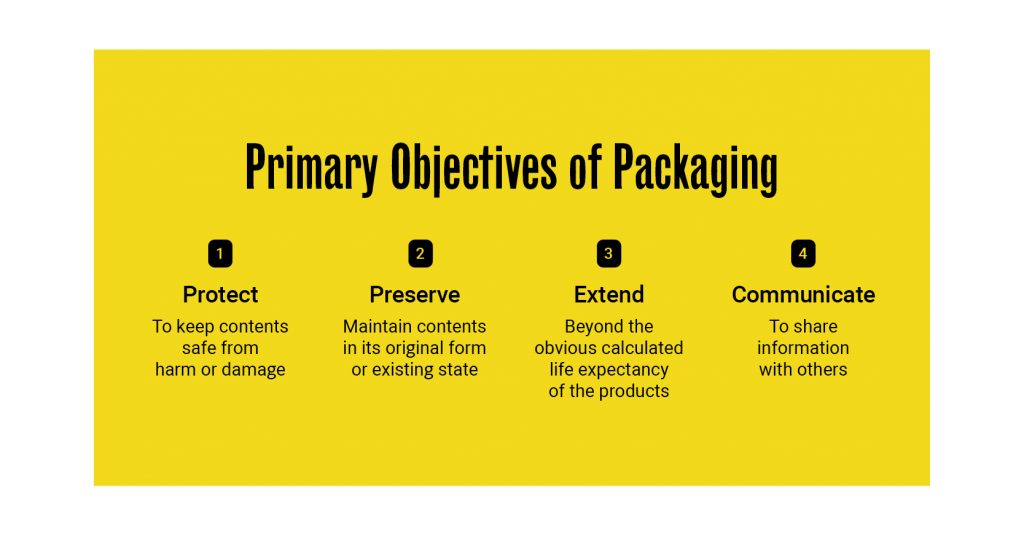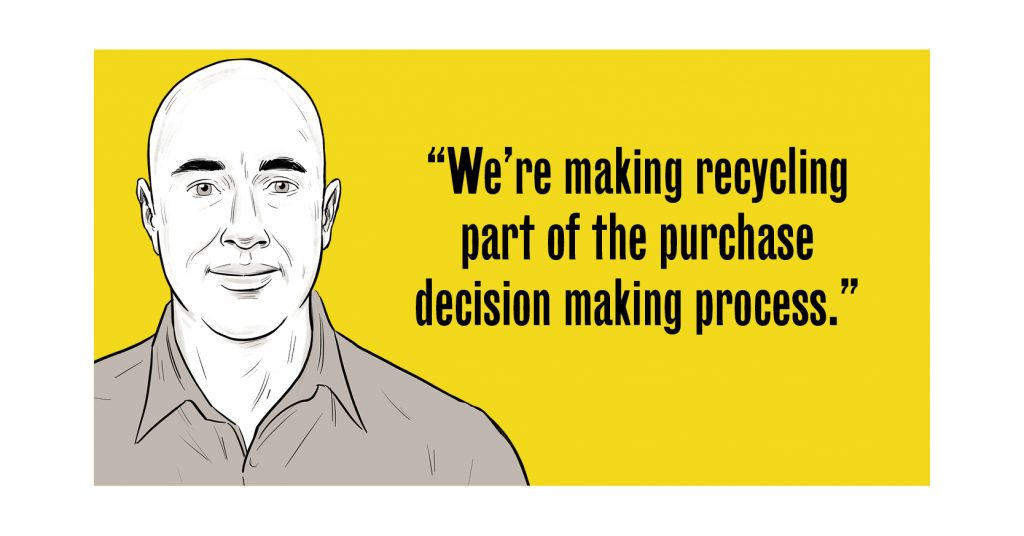
Packaging is only truly useful if it performs its primary duty without compromise, otherwise we are being wasteful before we have begun.
With this in mind our team takes the time to understand the primary objective and expectations of the stakeholders in the value chain with every product. Combining form (circular) with function (use), we can then design for the ecosystem we live in.
Packaging must provide an adequate form of protection for the product to reach the consumer in its original undamaged form.
Preservation means to minimise degradation of the item being packed.
Whenever possible we must extend the shelf life of the product to ensure the longest duration of time possible to consume or sell. Here, the main objective is to eliminate food waste.
We communicate many messages to consumers through packaging. The most important needs to be clear signposting of recycling method, which is critical if we are to capture and re-use the raw materials in future applications.
We can develop sustainable packaging solutions that reduce environmental impact and maximise shelf life of goods by:

When designing packaging products for the circular economy, two key themes underpin the decision making process for products and solutions:
Cyclpac has taken the time to understand the circular economy and its many moving parts. While these are all at different stages of development in different geographies, this is not a reason to not act.
We should adopt the clear principles that have been broadly accepted in most developed economies, mandated for, and bought into law by those that are leading the way.
The packaging industry is transitioning from tried and tested, proven combinations towards simplified structures made from preferred materials, capable of delivering the same if not better performance.
While this presents some challenges, this is technically achievable. Advancements in equipment and polymer technology allow us to achieve more with less. Legacy equipment and under investment will see some manufactures fail as change accelerates, while others in the industry are working towards ensuring everything they produce is recyclable, reusable or compostable in
time for 2025.
Innovation is core to our responsible packaging philosophy. It’s part of Cyclpac’s DNA and we are ready to help implement solutions right now.
Cyclpac engages independent, leading industry experts and technologists to ensure technical support and delivery is defined by the best interests of the outcome – not the available equipment.
By handpicking raw materials and using the latest technologies available to manufacture goods, we are able to deliver award winning packaging for our clients, entirely designed for the circular economy.
Cyclpac actively shares best practices through events like the AIP (Australian Institute of Packaging) education conference. We open our books with clients directly on our methodology, process, and principles. We are ‘boutique’ by comparison to the industry goliaths who invest $100m+ annually in R&D, so we have nothing to hide and everything to learn.
Cyclpac actively supports circular initiatives in the community, not-for-profits and providing expert insight on materials with a focus to reduce waste going to landfill.
Change comes from understanding, especially when we are talking about the circular economy and we recognise that change accelerates when we are able to share learnings and best practice.
Much of the work we are doing is a leap of faith. Not all aspects of the value chain are up to speed, but it is critical we don’t use this as an excuse not to change.
Cyclpac actively references global champions to its clients and we encourage our clients to follow and engage with:
Ellen Macarthur Foundation
Wrap
Ceflex
OPRL (On-Pack Recycling Label)
APCO (Austraian Packaging Covenant Organisation)
Recycling Near You (Planet Ark)
Feel free to contact us for more information regarding solutions, industry developments and the latest points of reference.
While product design and infrastructure are necessary, consumers ultimately require clear information to recycle and support our design efforts.
There is plenty of evidence to suggest consumers want more sustainable and responsible packaging, and brand owners can empower their customers to make smart and thoughtful purchasing decisions.
Cyclpac encourages clients to make an explicit call to action for recycling as part of core front of pack branding, making recycling part of the purchase decision-making process.

A client audit plays a key function in preparing businesses for the transition to packaging designed for the circular economy.
Understanding what is required, how far you need to travel and if this is viable with the incumbent equipment allows management of expectations alongside an improvement pathway and required investment.
The packaging sector is not idle. The past decade has seen proactive suppliers reduce micron/material weights. As polymers and papers have advanced, price pressure has predominantly driven this reduction, with industry and retailers championing the Reduce prerogative. This has typically been aligned with increasing overall volumes of packaged products as retailers push manufactures to hold pricing levels against increasing cost. The positive to take from this is that we are not averse to change and the challenges we need meet.
Manufacturers, producers, and packers should have clear internal targets (aligned with current capability) to reduce the overall impact of packaging supplied.
This is critical for two main reasons:
Environmental impact. We should minimise what we push into the world, especially to consumers. It is common sense.
Producer responsibility. As we accelerate towards 2025 and the various packaging targets that have been mandated, we may realise we have not done enough. Stricter governance, laws and taxes will subsequently accelerate change. This is already happening in many countries.
Sustainability informs much of the thinking, incorporating lifecycle analysis, reducing carbon footprint, reducing greenhouse gas emissions and minimising water usage, amongst others.
While these are all critical considerations, it’s important we don’t become overwhelmed by these interlinked elements. Tangible, practical thinking means we focus on things we can influence today, while considering the other factors which can be measured and managed. Making a start is the priority.
Cyclpac is in an ideal position. We do not need to ‘move to a more responsible packaging model’ or convince our customers and stakeholders about our ‘commitment to change’. We only produce responsible packaging. Our size, scale and ability to access the most appropriate and optimal capabilities is our advantage.
If change makes something better, then we should run towards it. There are more opportunities for those of us at the forefront of change. While we do not collectively have the ultimate solution to the plastics problem, we are hunting it.
Cyclpac embraces the circular philosophy that is emerging and being adopted. Many stakeholders refer to the ‘growing importance’ of sustainability. This underplays the urgency with which we should drive change. We have no time to waste.
Taking stock of your current packaging processes and inputs helps to deliver baseline data to inform decision making.
Cyclpac works with our customers to help audit usage, specifications, understanding materials being used, volumes, on pack messaging, packaging purpose in line with supply chains and end of lifecycle. From there we are able to develop strategies, undertake modeling, test assumptions and manage expectations to implement required changes.
Capturing important data, understanding the positive impact your business can have and communicating with your customers about your progress and vision empowers your brand to the conscious consumer or retailer.
Whether it’s a full packaging audit, or you simply want to better understand viable alternative packaging solutions, we are here to help and start the conversation with you.
— Edward